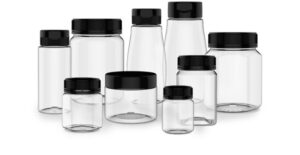Whether it’s a cardboard six-pack ring that protects vulnerable wildlife or a tamale wrapped in corn husks, sustainable packaging is about more than just the product. It shows that a company genuinely cares about its customers and the environment.
Upstream substrate producers are also taking the lead in sustainability innovation. They focus on high-priority areas, such as mono-materials that have both print and recyclability.
Crown Holdings
 With consumers increasingly prioritizing environmentally friendly products, brands have responded with a flurry of new www.pharmapac.co.nz sustainable packaging solutions. Many choose to switch from Styrofoam to recyclable alternatives, while others have taken it further by incorporating reusable or recycled materials into their supply chain. These changes are not only good for the environment, but they also provide a competitive advantage and protect against new regulatory threats.
With consumers increasingly prioritizing environmentally friendly products, brands have responded with a flurry of new www.pharmapac.co.nz sustainable packaging solutions. Many choose to switch from Styrofoam to recyclable alternatives, while others have taken it further by incorporating reusable or recycled materials into their supply chain. These changes are not only good for the environment, but they also provide a competitive advantage and protect against new regulatory threats.
Many companies are embracing sustainable packaging practices, and the trend will likely continue as long as the demand is there. Moreover, companies that don’t adopt these policies risk being displaced by competitors that do. Finding a sustainable packaging supplier that can help you cut costs, improve productivity, and reduce emissions is essential.
One of the most significant sustainability trends is that consumers demand environmentally-friendly packaging, and metal is one of the best choices. Inherently circular with never-ending recyclability, it uses less energy, preserves natural resources, and produces lower emissions than any other material.
Sustainable packaging is also essential for companies relying on third-party logistics (3PLs) to ship their goods, as these providers are responsible for a considerable share of the e-commerce market’s freight. 3PLs have adapted quickly to this demand and are now sourcing recyclable and www.pharmapac.co.nz sustainable packaging. Many retailers are also committed to using environmentally-friendly packaging, and a growing number of them have joined the Beyond the Bag Initiative started by a consortium including CVS Health, Target, Walmart, and other big players.
The company’s ESG Risk Rating and management score from Sustainalytics assesses how exposed it is to the most material ESG issues and how effective the management team is at managing them. The company’s Twentyby30 program outlines twenty measurable ESG goals to be completed by 2030, aligning with the United Nations’ Sustainability Development Goals.
Crown is also working to raise recycling rates for aluminium cans by funding can-capture technologies at recycling centres, helping consumers understand the importance of recycling used beverage containers (UBCs), and promoting impactful public-private recycling initiatives. By 2022, Crown will also ensure that all its operations meet a new unified standard of migration, toxicology, and safety.
The Tshirt Mill
While the impact of packaging typically makes up a small percentage of apparel brands’ overall environmental and carbon footprints, it’s become consumers’ first impression of a company’s commitment to sustainability. Many brands have responded to consumer demand by launching internal initiatives, joining larger coalitions, and adopting sustainable clothing packaging practices. These companies use a variety of new ideas and technologies for more conscious packaging, including compostable mailers. These bags are said to biodegrade in a commercial facility or at home, but they only work when the non-compostable mailing labels are removed and placed in an actual compost bin, not regular trash.
Some brands go even further than reducing single-use plastics by using plant-based packaging materials, like cornstarch, jute, and cotton. For example, Iowa-based screen printer The Tshirt Mill ships orders in 100% compostable mailers sourced from plants and other natural materials. Different companies use eco-friendly paper, reducing emissions by requiring less energy than virgin fibre paper. Additionally, some companies are experimenting with plantable packaging, which uses plant material that can be planted after the garment has been worn.
One of the more innovative approaches to www.pharmapac.co.nz sustainable packaging comes from BOXED Water, which sells bottled water in cardboard boxes reminiscent of milk cartons. This type of packaging has considerable potential for reducing emissions, as it can be shipped flat and then refilled in local refilling stations. The company also tests its dyes against a Restricted Substance List to eliminate hazardous chemicals and is committed to working with OEKO-TEX Standard 100 certified facilities.
Several fashion retailers are experimenting with sustainable packaging by incorporating air pillows. These pillows are made from recycled and biodegradable materials, such as cellulose from bamboo, and are available in various sizes to protect delicate items. They’re also recyclable at 18,000 retail store drop-off locations in the U.S.
Other brands are reducing the amount of packaging used by making their products smaller and streamlining the design of their boxes and pallets to fit the items better. This will reduce the need to store and ship the packaging, reducing logistics costs. In addition, it will help to reduce waste. Lastly, brands can minimize shipping and storage costs using software such as Esko’s Cape Systems, Tops Pro, or similar to create optimal packaging and pallet designs.